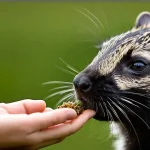Most Unusual Animal Discoveries in the UK: Notable Species and Their Stories
Unusual animal discoveries UK often include rare animals that defy expectations based on geography and climate. An animal sighting becomes unusual when the species is either native but seldom seen, non-native with established populations, or invasive with potential ecological impact. For example, a sighting of a tropical moth species far north of its typical range qualifies as an unusual animal discovery UK due to both its rarity and surprising habitat.
Among rare animals recently reported are exotic amphibians found thriving in unexpected UK wetlands, highlighting shifts in local ecosystems. These discoveries often spark scientific interest because they indicate either natural range expansion or human-assisted introduction.
Also to see : What are the latest UK wildlife reintroduction projects?
Animal sightings UK extend beyond traditional wildlife hotspots, encompassing urban gardens and industrial sites where invasive species have adapted successfully. These diverse contexts challenge definitions of what is a typical habitat for rare animals.
The spectrum of unusual animals includes native species whose populations are growing after decline, non-native species integrating into local food webs, and entirely new species first recorded in the UK. This breadth reflects ongoing environmental changes and emphasizes the importance of monitoring all animal sightings UK. Regular reporting helps build a comprehensive picture of biodiversity shifts across the country.
Also to read : What are the most threatened animal species in the UK today?
Landmark Discoveries: Species That Astonished Scientists and the Public
Notable rare animal species UK discoveries have consistently intrigued both scientists and the public, highlighting the unexpected richness of local biodiversity. One such landmark was the unexpected confirmation of the ghost shark off the Scottish coast. Though long believed to inhabit deeper waters mainly outside UK jurisdiction, this species’ presence in nearby marine environments has prompted a re-evaluation of local marine ecosystems.
Another fascinating chapter involves British big cats, enigmatic creatures reported across rural England and Wales. Though often regarded as folklore, systematic investigations and credible sightings have lent weight to their reality, spurring scientific finds UK that continue to examine these elusive predators’ existence and ecological impact.
These new animal discoveries often come from a mix of rigorous field surveys and public reports, frequently validated by expert analysis. The significance lies not only in the species themselves but also in the light they shed on shifting habitats and climate influences. Locations such as the Scottish Highlands and secluded southern moorlands have been hotspots for these scientific finds UK, each discovery drawing attention across media and research circles alike.
The ongoing validation process ensures that each rare animal species UK confirmed extends our understanding of Britain’s complex and evolving wildlife.
Discovery Circumstances: How Unusual Animals Were Found in the UK
Unusual wildlife finds in the UK often arise from varied animal discovery circumstances UK, ranging from intentional scientific expeditions to surprising accidental discoveries. Citizen sightings play a pivotal role, with ordinary people reporting rare or unfamiliar species during daily activities. This public involvement increases detection rates and enriches biodiversity records.
Accidental discoveries frequently make headlines. For instance, a rare amphibian was found in a local pond after a family stumbled upon it during a picnic. Such stories capture public interest, highlighting the unpredictable nature of wildlife encounters. Media coverage amplifies awareness, encouraging more citizens to participate in reporting, thus creating a positive feedback loop.
Seasonal and environmental factors also influence these discoveries. Migratory species are often spotted during specific periods, while unusual weather patterns can push animals into new territories. For example, warmer springs have enabled some species to extend their ranges into the UK, leading to more frequent unusual wildlife finds.
The blend of citizen science, accidental observations, and targeted research creates a dynamic environment for animal discovery circumstances UK. Together, these elements foster a richer understanding of the UK’s evolving ecosystems and underscore the importance of community engagement in wildlife monitoring.
Native, Invasive, and Previously Unknown: Classification and Impact
Understanding whether an unusual animal is native, invasive, or new to science is crucial for conservation science UK. Native species naturally belong to the UK ecosystem, having evolved there or established stable populations without human intervention. In contrast, invasive species UK are non-native animals that may cause harm by outcompeting native wildlife or disrupting ecological balance.
The impact of new species in the UK varies. Some invasive animals alter habitats, threaten biodiversity, and challenge local conservation efforts. For example, invasive plant-eating insects may decimate native flora, affecting dependent species. Conversely, discovering previously unknown native species or newcomers previously unrecorded in UK waters or landscapes can enrich biodiversity, providing insight into habitat changes or climate effects.
The scientific community evaluates such findings rigorously. Identification involves genetic tests and ecological assessment to determine origin and impact. Conservation science UK then devises management strategies, balancing protection of native wildlife against controlling invasive populations. Public awareness campaigns and targeted research projects often follow to mitigate risks and promote coexistence.
This classification and impact assessment help prioritize resources effectively, ensuring the UK’s natural heritage is preserved while adapting to ecological shifts. Exploring more about conservation science UK can deepen understanding of these complex dynamics.
Visual Evidence: Photos, Illustrations, and Firsthand Reports
Visual documentation plays a crucial role in the validation of unusual animal discoveries in the UK. High-quality animal discovery photos UK provide direct proof of sightings, allowing scientists and enthusiasts to authenticate species presence. Clear images help differentiate rare animals from lookalikes or common species, significantly reducing misidentification.
In addition to photographs, scientific illustrations offer detailed, anatomically accurate representations that aid in species identification. These illustrations accompany published reports to clarify subtle traits that photos may miss due to lighting or angle.
Eyewitness accounts also contribute valuable context. Verified accounts in reputable news outlets or scientific reports describe behaviors, habitat, and discovery circumstances, offering a narrative that supports the visual evidence. When combined, these firsthand reports and verified images create a robust framework for confirming rare animal sightings.
Together, animal discovery photos UK, eyewitness accounts, and scientific illustrations form an essential triad. They increase public confidence, assist researchers in tracking species distribution, and help policymakers make informed decisions regarding conservation priorities. In the digital age, sharing such evidence quickly through platforms encourages timely and accurate identification of unusual wildlife across the UK.
Scientific and Cultural Significance of Unusual Animal Discoveries
Unusual animal discoveries UK hold immense scientific impact by expanding knowledge of species distribution and ecosystem dynamics. Each rare sighting challenges existing assumptions about UK fauna, providing evidence of migration trends or environmental shifts. Researchers gain valuable data on habitat preferences and adaptation mechanisms, which are critical for biodiversity conservation.
The significance of animal discoveries UK extends beyond academia. Public and cultural reactions often include curiosity, pride, and concern. Local communities may feel a renewed connection to their environment when encountering rare species, fostering greater support for wildlife protection. Media coverage further amplifies interest, sparking conversations about nature’s resilience and vulnerability.
Ongoing research benefits from these discoveries through targeted studies aimed at understanding the ecological roles of unusual animals. Conservation actions frequently follow, such as habitat restoration or monitoring programs, to safeguard fragile populations. Citizen science projects also play a vital role, enlisting public participation in data collection.
In summary, the scientific impact and cultural significance of these animal findings UK underscore the need for continued vigilance and collaboration. They serve both as biomarkers of environmental health and as catalysts for conservation efforts. For deeper insights, explore detailed reports on the latest discoveries.





